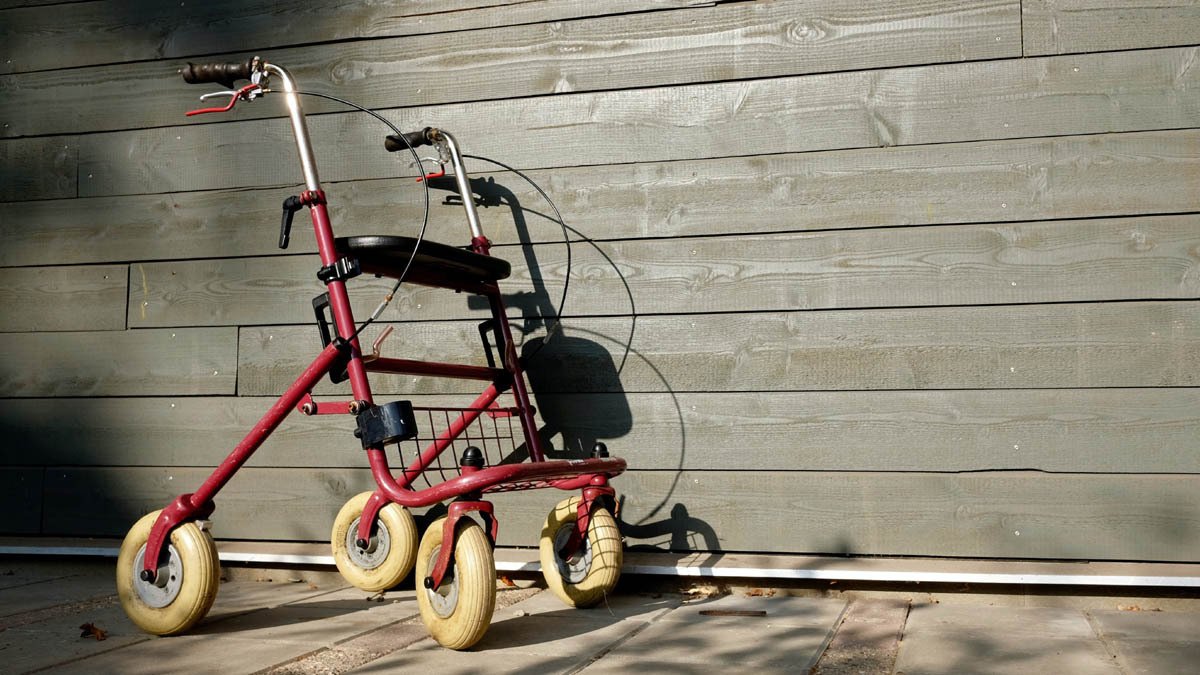
I’m sorry to distract you from the kerfuffle over Downing St Christmas parties, and who paid for the redecoration of Boris Johnson’s flat etc, but there is something else which should concern us all. There is a massive crisis in social care in this country. We should all be aware of the possible implications for ourselves, but many people seem not to realise the gravity of the situation. The reasons for the crisis – and it is a real crisis – are manifold.
As well as grappling with fewer acute hospital beds per head of the population than in comparable countries, hospitals here regularly run short of beds for patients needing acute care, partly because those beds – reportedly 10,000 beds(£) as of 5 December 2021 – are occupied by people who should not really be there. If the proverbial ‘little old lady’ falls and breaks her hip, once she is repaired in hospital and – in theory at least – declared fit enough to be able to go home to convalesce, she ought to be assessed and provided with a ‘care package’ which would enable her to continue living at home. If, however, no care package can be put in place for her, the hospital is faced with the dilemma of whether to discharge her anyway because they need the bed for someone else, or to keep her in hospital even though she no longer needs actual nursing.
This situation is probably one of the most obvious aspects of the crisis: we have all seen pictures of ambulances queueing outside hospitals whilst paramedics wait to hand over patients for whom there are no beds – but why are there such difficulties in providing the care packages at home, so that the little old lady can be safely discharged from hospital?
The phrase ‘social care’ encompasses different kinds of care for people at all stages of life and with all kinds of needs, but because of my own experience of care for elderly people, this article will concentrate on that. My own parents and my ‘in-laws’ all needed professional care in the latter stages of their lives and over 15 years ago I became familiar with the system then in place and the steadily deteriorating situation.
It was clear even then that the existing demand was not being met and that huge additional capacity would be required to answer the needs of an ageing population: when the National Health Service was established in 1948, life expectancy was 66 for men and 70 for women; it is now 79 and 83 years respectively. Sadly, whilst people may now live longer than previous generations did, many fall victim to the frailties and diseases associated with old age and despite an almost-universal desire for independence, increasing numbers need help.

Over the past 40 years – during which societal changes have meant that care cannot always be offered by relatives as often happened in the past – various attempts have been made to address the issue of how social care should be provided and paid for. Every one of those attempts has failed, usually because the recommendations were judged to be unworkable or too unpopular, and any decision (or indeed rational national discussion) was repeatedly deferred.
There was a lot of press coverage about elderly people having to sell their homes to pay for care, and much outrage resulted, whilst the situation on the ground got worse with no remedy in sight. Finally, Sir Andrew Dilnot published a report which grasped the nettle. Commissioned in 2010 by David Cameron’s Conservative-minority administration, Dilnot’s report, encouragingly called Fairer Care Funding, came up with a plan. A plan which the government promptly put on the ‘electorally too-difficult’ pile, and shelved.
There was no progress for almost a decade. But in August 2019, in his first speech as prime minister, Boris Johnson declared:
“My job is to protect you or your parents or grandparents from the fear of having to sell your home to pay for the costs of care … And so I am announcing now – on the steps of Downing Street – that we will fix the crisis in social care once and for all, and with a clear plan we have prepared to give every older person the dignity and security they deserve.”
The Guardian
If Johnson really had a plan then – which seems doubtful, given that he seems to have a habit of making promises which turn out not to be very sound – it took a very long time to appear. Meanwhile, many more people became older and frailer, suffering falls and illnesses which rendered them dependent upon other people for help with basic things like getting up, washing and dressing, and preparing simple meals. Over the summer of 2021 the number of people waiting for care assessments and support increased by 25 per cent to almost 300,000, according to the Association of Directors of Adult Social Services (Adass). But the number of successful applications has been falling steadily: fewer and fewer people are receiving any outside help. More are having to depend on charities, family members or the kindness of friends and neighbours – or having to struggle on without any help at all.

The provision of social care makes up an increasing proportion of the obligations placed by law on councils. Both residential care and domiciliary care (where professional carers visit people’s homes to deliver care or to help people with those basic tasks), is sometimes provided by the NHS under ‘Continuing Healthcare’ arrangements, particularly if people are so ill as to be expected not to live much longer. Very much more often, however, it is paid for by the council, or part-paid for by the client – on a means-tested basis – and ‘topped-up’ by the council; but as Mick Fletcher makes clear in his article for West Country Voices, local councils’ funding from central government has fallen by 37 per cent in real terms between 2009 and 2020. As a result, most councils have been forced to make increasingly savage cuts to services they previously provided: libraries, leisure centres, youth clubs… the list is endless; but they must continue to provide social care, the costs of which are rising whilst the demand also rises. Such is the strain on council funds that the criteria for receiving council-funded care have become increasingly rigorous and the number of people getting even part-council-funded care, either in residential homes or as domiciliary care, has shrunk.
In 2005 my father-in-law, who had multiple sclerosis, needed domiciliary care and we found that the application process was demanding and intrusive – councils must, after all, try to prevent fraud and to share out limited resources fairly. The premise was simple: that if you applied for or were deemed to need social care, and you had savings over £14,250, you would be required to pay at least a proportion of the fees on a sliding scale. (This threshold is to rise to £23,250 from October 2023, which sounds like a big increase since 2005 but will probably lag inflation ) Depending on where you live, domiciliary care can now cost upwards of £20 an hour – and an hour’s help for a very frail person passes extraordinarily quickly.
Average residential care home fees in England are now running at £704 per week ‒ not including specialist care, eg for people with dementia (nursing home fees are even higher) – and council funding or ‘top-up’ does not always match the actual fee. When my mother needed 24-hour care in a residential home, I discovered that clients who were assessed as being able to pay the full fees themselves effectively ended up subsidising those receiving council funding, because of the shortfall.
Cuts to council-funded care means that some residential homes will only accept fully ‘self-funding’ clients. The very thorny question of what happens to residents – either completely or partly self-funding – if their money ‘runs out’ during their stay, has a very unpalatable answer: when discussing the contract for my mother’s needs with one care home, I asked what would happen if residents’ assets do not last long enough to pay their contribution to the fees, and I was reluctantly told that if a family could not help financially, it sometimes proved necessary for the home to ‘downgrade’ accommodation – clients would be moved from a spacious, pleasant room with a view to a much smaller one with no outlook, or even to a shared one. I even heard that some clients were asked to leave homes altogether when their money ran out. If you are on the receiving end of treatment like this it is embarrassing, demeaning and stressful, at a time in your life when you are least able to cope with it.
At the opposite end of this situation, of course, are care homes faced with increasing costs, increasing demand for placements and less funding than they need from the state: something has to give, or funding obtained from elsewhere. Some care homes are run by charities on a not-for-profit basis. One example is the MHA group (formerly called Methodist Homes for the Aged), the largest UK charity care provider, which now supports over 18,000 people in residential homes, in community centres and in their own homes. Other residential homes are run primarily as businesses: some are owned and run by small family firms; many more are members of larger groups and others still are part of commercial conglomerations owned by private equity firms which have shareholders’ dividends to pay. And debts to service.

On 6 December 2021 the BBC aired a Panorama revealingly called Crisis in care: follow the money. Interviewed for the programme, former health and social care secretary Jeremy Hunt, now chair of the Commons Health and Social Care Committee, says, “It’s the Wild West out there … We need the Competition and Market authority to make sure that the market is operating in the interest of consumers, particularly the very vulnerable people who need that sector.” One of the biggest care groups, HC-One, is owned by private equity and when investigated by Panorama, told the BBC in a breakdown of how residents’ fees are spent that “nearly 20% goes towards servicing debt, building up investment reserves and providing a financial return to investors.”
Unlike some of the investors, those employed in the sector do not enjoy great financial returns. They are not well-paid; “the average hourly pay for care workers was below the rate paid in most UK supermarkets” said the King’s Fund in 2019. The job can be difficult, unpleasant at times, and most people outwith the sector probably underestimate both it and the people who do it. Some workers have a genuine vocation for it and love their jobs, but sadly, in my experience others do not: if you don’t have much in the way of qualifications or experience in other fields, becoming a care worker may just be a means of paying the bills. Recruitment and retention of staff has been a problem for years.
Whilst the nation was apparently gripped during October 2021 by the question as to whether Johnson’s social care “plan” meant the little old lady might or might not have to sell her home to pay for her care, his government was probably hoping that most people wouldn’t be paying much attention instead to an even more fundamental problem. It was a problem which even the usually-supportive Daily Express reported: we don’t have enough carers, or enough places in residential care, to satisfy the need and to look after people properly.
And things are only going to get worse.
There is currently a shortfall of at least 100,000 care workers nationally. Before Brexit, many care workers were EU nationals; in my own experience I met care workers from across Europe, from Poland to Portugal, working in this country on terms and conditions and for pay which many British people would not accept. Many EU nationals left the UK after the Brexit referendum, as the atmosphere of hostility worsened and they began to feel less welcome here; the new requirements for their contracts also led to many leaving. The Covid pandemic has exacerbated the situation – many more workers left the UK to be with their families in other countries and they have not returned because of the new post-Brexit bureaucratic hurdles: Health and Social Care Worker visas, the requirement to have at least £1,270 in the bank, enough money left over to pay all the application fees, the promise of a job paying £10.10 per hour (the average rate in 2019 was £7.90), and the English-language requirements – the government is not making it easy.
Many other care workers have left the social care sector as better-paid and less gruelling jobs – many previously held by EU nationals – became available in restaurants, hotels, Amazon ‘fulfilment centres’ and the like. Still more left in October 2021 when the requirement became law for them to be fully vaccinated against Covid.
Residential care homes are having to close because of lack of staff. Care is very labour-intensive, given that, for example, regulations require two people to help an invalid with poor mobility to his or her feet. In the five years to December 2021 there were increasing numbers of domiciliary care providers reported to be ‘handing back’ their contracts to councils, owing to lack of staff.
Given the increasing demand, rising costs, spiralling debt and staff shortages (there are more than 2000 vacancies in Devon alone), those managing the care sector must have hoped that Johnson’s “clear plan” would provide a strategy both to deal with the current crisis and to ‘future-proof’ the care system. Many were bitterly disappointed when it became obvious that the so-called plan was merely tinkering at the edges.

The feature of the plan most talked-up by the government was that there will be a ‘care cap’, as recommended by Dilnot a decade ago. As from October 2023, Johnson said, people will not have to pay more than £86,000 of their own money in care costs: his government had finally dealt with the problem which every preceding government had signally failed to do. Perhaps this was deliberately misleading, or perhaps – as is his wont – he did not grasp the consequences of his policy. It was left to others to examine the detail and to discover that the costs covered by the ‘cap’ were only for personal care, and would not include accommodation fees (which the government thinks will be “up to” £200 per week). Nor was it clear to begin with that the £86k threshold will not take into account any contribution already made by a client’s council.
So, contrary to Johnson’s boasts, the little old lady may well still end up having to sell her home to pay for her care; and to add insult to injury it has also become clear that if she owns a house of modest value, she will end up losing proportionately much more of her ‘assets’ than someone with a more valuable property.
When the government said it would be making available £36bn in extra funding for the NHS and social care in England over the next three years, the announcement was cautiously welcomed, although it was followed by much dispute even in Tory ranks when it was explained this money would be raised by a new ‘Health and Social Care Levy’ from April 2023. This increases National Insurance by 1.25 per cent and is another Tory policy which will penalise the less well-off, leaving those on high salaries relatively unscathed. It has been reported by the King’s Fund and others that nearly all this extra money will be swallowed up by the NHS long before any funds are diverted to social care in 2023 – by which time the annual cost will be £22.4bn, just to meet demand.
On 30 November 2021 the government published its White Paper, glowingly entitled People at the Heart of Care, which social care employers had hoped would truly recognise the urgency of the situation and would propose some measures to address the shortage of care workers. It doesn’t. The government appears blind – whether wilfully or not is unclear – to the fundamental problem at the root of the crisis, and social care providers are universally disappointed:
“the idea that the White Paper will make any real difference to the recruitment crisis in the sector is fanciful” said the King’s Fund.
Quoted in The Guardian on 1 December, Jeremy Hunt said in the House of Commons that not only would older people continue not to get the help they need “because the carers don’t exist”, but the proposals would do nothing to stop “hospital wards continuing to be full of people who should be discharged”.
Does this sound all too familiar?





